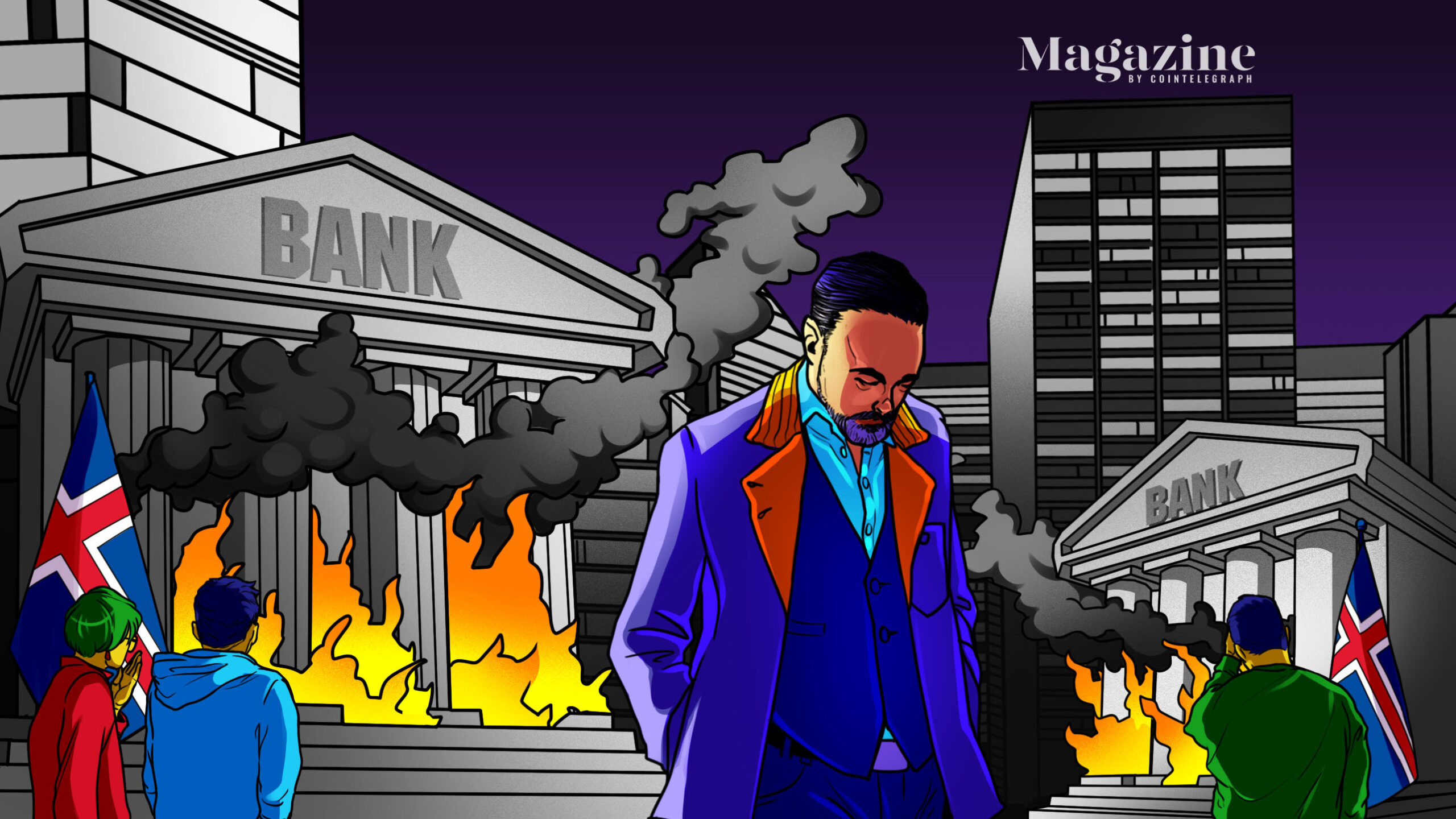Many Bitcoiners look forward to the day in the future when the banking system collapses and hyper-Bitcoinization occurs.But Jared Bibler — an Ameri
Many Bitcoiners look forward to the day in the future when the banking system collapses and hyper-Bitcoinization occurs.
But Jared Bibler — an American who experienced the most dramatic banking and share market collapse in living memory in Iceland in 2008 — says the reality is something no one would ever want to experience.
“It’s a deep nausea in the pit of your stomach that does not go away over many months, that feeling of ill-being persists,” he says. “Because it doesn’t happen all in one day. It happens slowly.”
Like many in the crypto community today, in the lead up to the crash, Bibler felt as if he was the only one to notice the ever-widening cracks in the financial system. When it finally happened, he admits to a sense of misplaced pride.
“I was like, ‘Hey, guys, the crash is happening now! I was trying to warn you about this for a couple years’,” he recalls thinking. “So, I was feeling a bit arrogant or something. But I didn’t realize like, ‘Hey, in two days, pal, you’re going to be worrying if you can buy food.’”
3 October 2008 — a run on the banks
Prof. Gylfi Magnússon goes on national news at noon, says the banks are bankrupt, we don’t have enough foreign currency for everyday goods. Icelanders respond by withdrawing 5.5 billion ISK in cash, 27x the normal amount for a Friday.
— Jared Bibler (@jared_bibler) October 3, 2021
Bibler, who later joined the Fjarmalaeftirlitid (FME) investigation into the collapse, had quit his stressful Wall Street job in 2004 and moved to the tiny country after vacationing there. He ended up working at one of the largest banks, Landsbanki, and in a stroke of bizarre timing, quit his job just days before all three major banks collapsed in October 2008.
Each was the size of Enron, and the impact of the collapse on the 350,000 residents has been likened to 300 major banks collapsing in a country the size of the United States. The stock market plunged 97% from its 2007 high and the value of the national currency, the Krona, halved. People began to stockpile goods from supermarkets and many were forced to line up for food aid.

“Imagine if the money that you have in your bank account now would suddenly buy you 1/10th of what it had? That happened in a week. How would you feel? ‘I can’t travel abroad anymore, I can’t buy a car.’”
Bibler recalls the head of the central bank warning: “If we don’t get on top of this, we’re looking at 30 years of anarchy in this country. And I think he was right, I think we were a week away from a kind of a Mad Max,” he says.
“In the kind of crash that we had with supermarket shelves going bare, and you’re not sure where your next meal is going to come from, and you’re not sure if the money in your wallet can buy anything the next morning, I think you’re pretty close to a real breakdown in society.”
Over the months that followed, inflation hit 14% annually, interest rates hit 15% while GDP fell 10% in real terms and plunged the country into a depression. The unemployment rate quintupled. Ranked as the world’s most peaceful nation by the Global Peace Index, things turned ugly.
“The mood on the streets of Iceland was vengeful and kind of scary,” he says. “I was a bit afraid of it. People were down in front of the Parliament every day screaming and yelling and banging pots and pans, lighting fires and making noise — really super angry.”
But, how did the three major banks in this tiny nation manage to grow their assets to 11 times the size of the economy, to the point where their collapse sent the country to the brink of anarchy? As Bibler details in his new book Iceland’s Secret: The Untold Story of the World’s Biggest Con, it was a mixture of greed, incompetence and outright fraud.

The most peaceful country
Iceland is a very unusual place. Despite having just 350,000 people, it has everything a larger nation has including its own government, customs service, share market and industry. For years, the economy was built around fishing and aluminum smelting, but after the banking sector was deregulated in 2001, huge amounts of foreign money poured in. The banks went on a debt-fueled spending spree acquiring foreign real estate, fashion brands and soccer teams.
“Suddenly, there was a huge market for Icelandic (debt), especially commercial debt, which was high yielding,” Bibler explains.
“And these newly privatized banks, they were hungry to grow, they were super aggressive. So they grew almost like a pumpkin, overnight.”
The banks grew 20-fold in the space of just seven years and by the second quarter of 2008, the national debt had grown to 50 billion euro, equating to 160,000 euro worth of debt for every man, woman and child.
With the economy booming and the stock market jumping up to 4% a month, no…
cointelegraph.com
